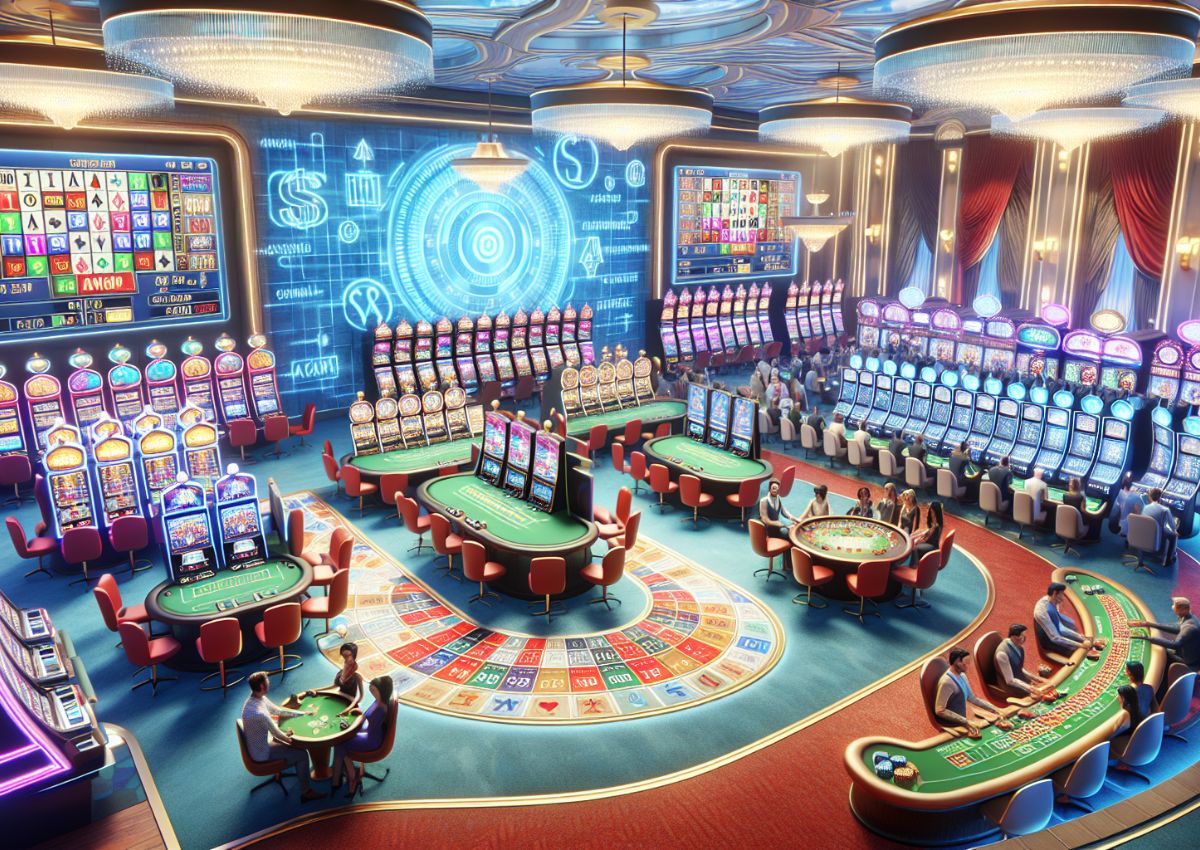
In a lively and exciting world of casinos, where fortune and tactics intertwine, color and design play a key role in drawing in players. As soon as visitors step into a casino or log into a gaming platform, they are enveloped in a visual feast that captures their attention and entices them to discover more. Vivid colors, engaging graphics, and innovative layouts are meticulously crafted to create an environment of thrill and anticipation, ultimately improving the gaming encounter.
As gamblers navigate through the dynamic landscape of casino games, they encounter a range of designs that not only serve aesthetic purposes but also influence feelings and decision-making. Hues like scarlet and yellow symbolize riches and luck, while soothing navy and greens can create a more tranquil environment. Understanding how these elements work together enables casinos to create an inviting and energizing atmosphere that encourages players to engage with the games, invest additional time at the tables, and boost their general enjoyment.
The Science of Tint in Gaming Establishments
Tint plays a key role in the design of gambling games, shaping player emotions and behaviors. Vivid and bold colors, such as scarlet and yellow, are often used to incite thrill and attract notice. These hues create a sense pressure and vitality, encouraging participants to engage more enthusiastically with the activity. By thoughtfully selecting tints, designers aim to evoke feelings of satisfaction and anticipation, which can enhance the complete gaming experience.
Distinct colors also have psychological associations that can influence how gamblers perceive their possibilities of winning. For example, green is commonly associated with fortune and abundance, making it a well-liked choice in games like the roulette wheel and poker games. This link can result players to feel more positive and confident in their gaming, ultimately encouraging them to stake more. Comprehending these connections allows game creators to craft environments that enhance player satisfaction and loyalty.
Moreover, the interface of gambling game interfaces often uses blended colors and differing hues to instruct player actions. For instance, winning outcomes may be highlighted with bright, differing shades, creating a visual incentive. This technique strengthens positive outcomes and promotes repeated engagement. By utilizing color psychology, casinos can develop games that not only draw players but also hold them involved and invested in their gaming experience.
Creative Features that Attract Players
The aesthetic appeal of gambling games is largely influenced by the use of bold colors. Lively and striking colors are deliberately chosen to create an inviting atmosphere that grabs interest. For example, crimson and golden hues often signify luck and wealth, which is why they are prevalent in the color schemes of slot machines and game surfaces. These colors not only attract players in, but they also evoke emotions associated with excitement and anticipation, enhancing the overall gaming experience.
In parallel to color, the design and layout of casino games play a crucial role in player attraction. Games are designed to be intuitive, ensuring that players can easily understand the rules and gameplay. User-friendly interfaces, along with engaging graphics and animations, help maintain player interest and promote extended play sessions. The physical elements, such as the texture of the buttons and the sounds of the games, also add to a holistic sensory experience that keeps players immersed.
Finally, conceptual elements in game design can significantly influence gaming decisions. Many casino games are inspired by popular culture, fairy tales, or adventure themes, incorporating symbols and characters that resonate with players. These themes create a sense of immersion and relatability, making each game feel unique. 49JILI When players feel a bond to the concept, they are more likely to opt for that game over others, leading to higher participation and excitement within the casino environment.
Case Studies: Effective Casino Slot Designs
One prime example of effective gambling game design is the popular slot machine series based around hit movies. Games such as those based on the The Wizard of Oz and Game of Thrones utilize bright colors and top-notch graphics to enthrall players in recognizable narratives. The employment of dynamic visuals and engaging sound effects takes the interest of players, building an affective connection to the theme. This strategy not just encourages longer play but also improves the overall gaming experience, yielding increased player retention.
Another effective case is the application of color in table games like 21 and the wheel. Casinos often develop these games with deep reds and greens, colors traditionally linked with luck and wealth. For instance, the green felt on a blackjack table provides a relaxing effect, while the crimson accents in roulette invite anticipation. This thoughtful use of color helps to create an inviting atmosphere that motivates players to join in, addressing their psychological impulses and enhancing their enjoyment.
Finally, social casino games that include social features and vivid, colorful designs have experienced remarkable success in engaging players. Games like Zynga’s Poker and Slot-O-Mania leverage striking colors and playful animations to create an inviting online environment. The integration of leaderboards, social sharing options, and in-game rewards encourages competition and community, attracting players in for longer sessions. Such designs not only make the games visually attractive but also emphasize social connectivity, a key factor in player retention and engagement within online casino environments.